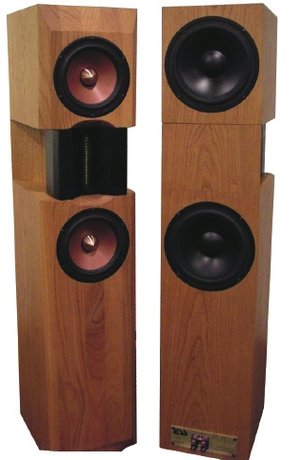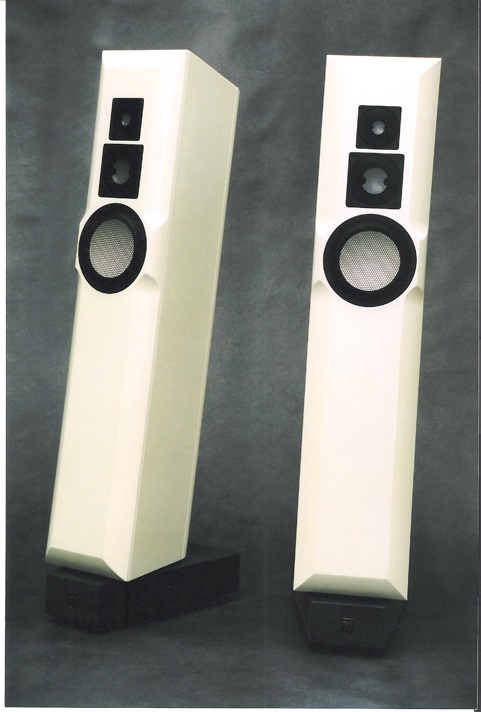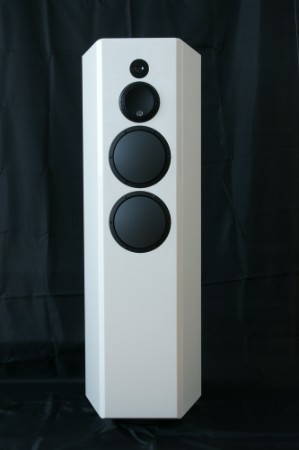What Show Jump Response, Group Delay And Phase Response?
|
The step response of a loudspeaker is generally associated with the aspect of time correctness. Although it is possible to mathematically extract the aspect time from the step response, as from any other signal, reducing the significance of the step response to this aspect misses the reality entirely. The step measurement is not a measurement of the time response. It is a measurement of the signal behavior. The graph of the step response relates the voltage values obtained from the sound pressure by the conversion by microphone to their temporal sequence in the same way as when using other signal forms or musical passages. Furthermore, the step response includes the frequency response of the transmission system, as well as all other extractable parameters. Not all parameters are optically differentiable, but they are still included. If you want to evaluate the behaviour of a loudspeaker at high volumes or under different dispersion angles, you can also do this with the help of the step response measurement. The loudspeaker is an electroacoustic transducer. The elementary task of an electroacoustic transducer is to convert a signal structure fed to it into an equivalent sound structure. This includes frequency response linearity, low distortion, dynamics, phase response, impulse response, transient response,
dispersion, etc. The step response of a loudspeaker describes its transmission behaviour and thus whether it performs this conversion correctly in principle. The basic requirement for the development of an electroacoustic transducer is thus defined. In addition, the electroacoustic transducer should generate the sound pressure required for its area of application and do so with as little distortion as possible. Furthermore, there is the requirement of a radiation pattern that is as uniform as possible. Not only quantitative aspects have to be considered. The quality of the sound radiated at different angles is also important. The quality (intelligibility) of the reflections depends on this. Therefore, the step response must also be measured in consideration of the radiation pattern.
The frequency response under angle alone does not tell us how a loudspeaker converts. Group delay alone does not tell us how a loudspeaker performs. The linear and non-linear distortions alone do not tell us how a loudspeaker is transducing. |
Interpreting the transducer response of a loudspeaker from frequency and phase response is much less meaningful. This is due to the very assumptions and exclusions that underlie these measurement models. It is easy to prove with any signal shape / sound structure that a loudspeaker with a deformed step response also distorts other signals and that a loudspeaker with a step response very close to the ideal response also transforms any other signal very accurately. Our eardrum perceives a corresponding sound image due to these deviations in the pressure-time curve.
By far the greatest errors are made by loudspeakers when converting a dynamic signal structure. Errors and non-linearities that we recognize in a frequency response diagram are also reflected in the step response. Errors and nonlinearities that we see when measuring phase response or group delay are also reflected in the step response. And if we put enough energy into the step response, we will also see the compression and distortion of a transducer. By the way, this is also true for amplifiers. Here we can also see very well the intervention and the characteristics of protection circuits. But above all, the step response stands for the connecting, for the overall representation of many other measurements. A loudspeaker with a deformed step response never has a constant group delay or a uniform phase response. Furthermore, the step response is the only measurement signal that represents the transducer quality of a loudspeaker in a complex way and at the same time it is also relatively widespread. The step response is therefore ideally suited for the evaluation of the large number of loudspeaker models.
|
Any professional knows that a speaker that converts properly is necessarily capable of a proper step response, that it can consequently also convert any input signal into the same output signal, whether a sine wave or any other waveform. And if the speaker can do this, and only then, it can properly convert a music signal. No loudspeaker that delivers a distorted step response is capable of input = output, that is, of reproducing music signals correctly, without distortion. The step response has its uniform characteristic ONLY if:
In the above cases, the reverse is not true! A linear frequency response does not indicate a correct step response. Neither does a uniform phase response. Thus "correct conversion" is not guaranteed! BUT: If the phase frequency response is correct (without phase rotations at the takeovers) and this not only in the steady state, but also in the transient state, then the step response is also correct, has the same linearity and thus also the correct basic characteristic (square wave over high and low pass filter). A short description can be found at the magazine Fairaudio about the step response and the impulse response. Errors in the development of electroacoustic transducers mostly occur when the complex result of the step response is transferred into the mentioned differentiations and the developer develops further on this differentiated model level and optimizes his development object. |
As a designer, you hear the sound responses of the loudspeaker during the measurement process and thus have a direct sound impression of what you can see on the screen. If you don't have this hearing experience, it takes some imagination to be able to imagine a sound formed from these sound waves. The loudspeaker delivers a sound similar in basic pattern every time it is stimulated with a signal. Anyone who was present during the measurement process would be able to hear this. The loudspeaker produces these transient noises in their characteristic typical of the loudspeaker regardless of whether we are listening to classical music, pop, rock or jazz over it or whether we want to listen to the soundtracks of films or understand the dialogues. It is easy to imagine, even for the layman, that the correct reproduction of vibrations results in fewer but distinct vibrations that are correct in their pitches. The sound image sounds clearer, more dynamic, less filled with artificial vibrations and more intelligible with a properly transducing speaker. There is a clear space between the tones and sounds, less filler, less distortion. The untrained listener would think it sounds thinner. But it doesn't in terms of energy content, only in terms of the nothingness between the tones! The comparison of a smeared, dusty disc with a freshly cleaned disc literally suggests itself here.
There are non-linearities in the transmission behaviour of loudspeakers, which basically result from the limited transmission bandwidth. These limits are also clearly visible in loudspeakers with largely correct step response.
|
Basically:
The synchronous transient of the tweeter with the midrange and woofer causes the full impulse dynamics. A bass drum, for example, sounds fast and crisp when all the drivers are in phase.
The step response starts with the rise time of the tweeter. But the tweeter has its limit in the rise time and the energy that should actually be generated at the beginning is usually converted into sound with a slight delay. Then an exaggerated peak is produced.
The low-frequency limitation of the transmission behaviour is noticeable in a more or less strong drop of the curve.
If the curve drops steeply from the peak, the woofer can only develop the first half-wave in the bass range weakly.
If the graph is flatter, this is more successful.
Of course a loudspeaker should also show a decent step response under different listening angles.
But to achieve this is a high art. A correct step response on the listening axis is, however, the absolute prerequisite for the correct conversion of the vibrations, the music. |
|
|
The phase responseThe frequency response is sometimes represented as a complex frequency response, which is used to represent the phase response.
This phase response of a loudspeaker also describes the time relations in the steady state, but not the impulse behaviour. The time relations in the transient state differ considerably from the time relations in the steady state. Even loudspeakers with inverted drivers can have a uniform (steady-state) phase response. When measured in the steady state, even the polarity change that leads to complete distortion of the signal during transients is not to be seen as a phase rotation. The impulse reproduction is nevertheless faulty.
In particular, the first half-waves of the transient, which determine to the highest degree the location and identification of a sound event, are not represented by phase measurements. The phase response related to the first half-waves would look completely different from the phase response related to subsequent half-waves. Therefore, there can be no phase response that is generally meaningful. Example: |
<zurück: Myroklopädie>
<zurück: Myro>



